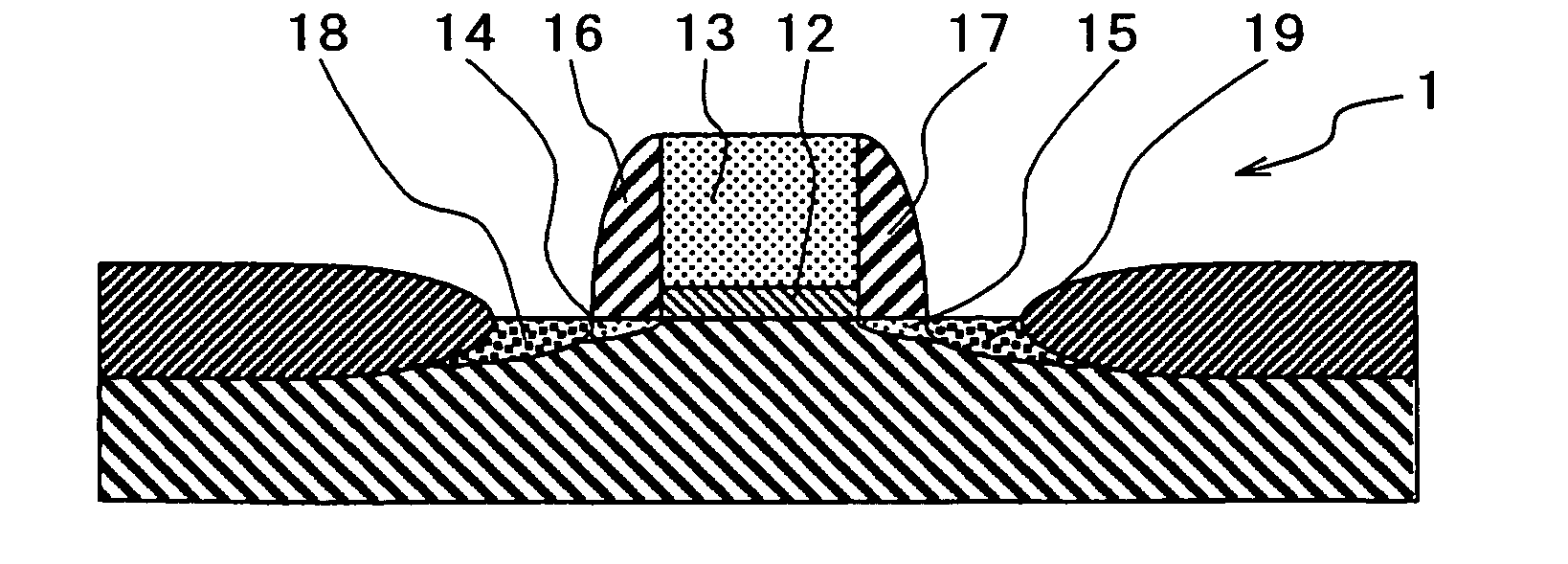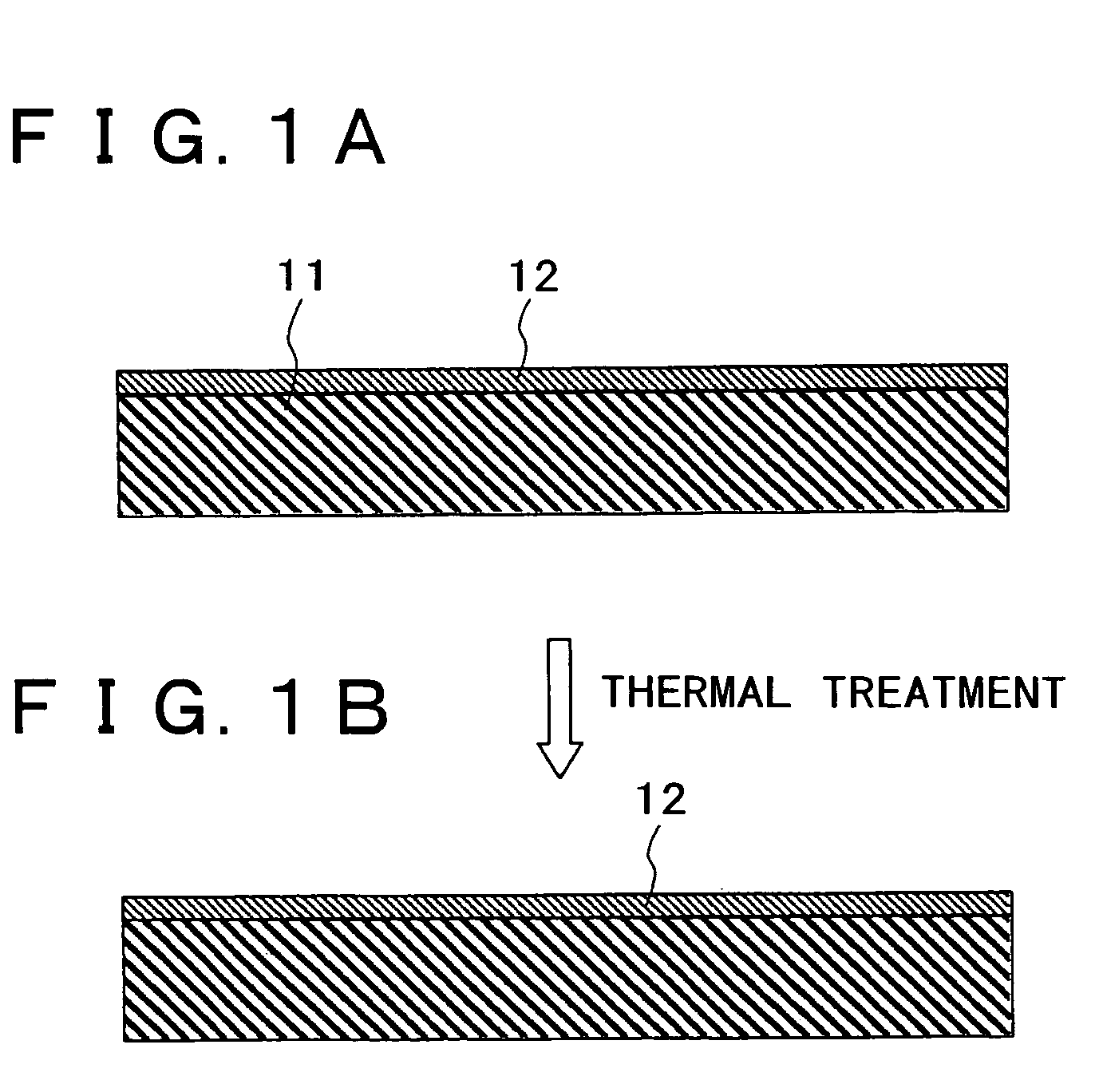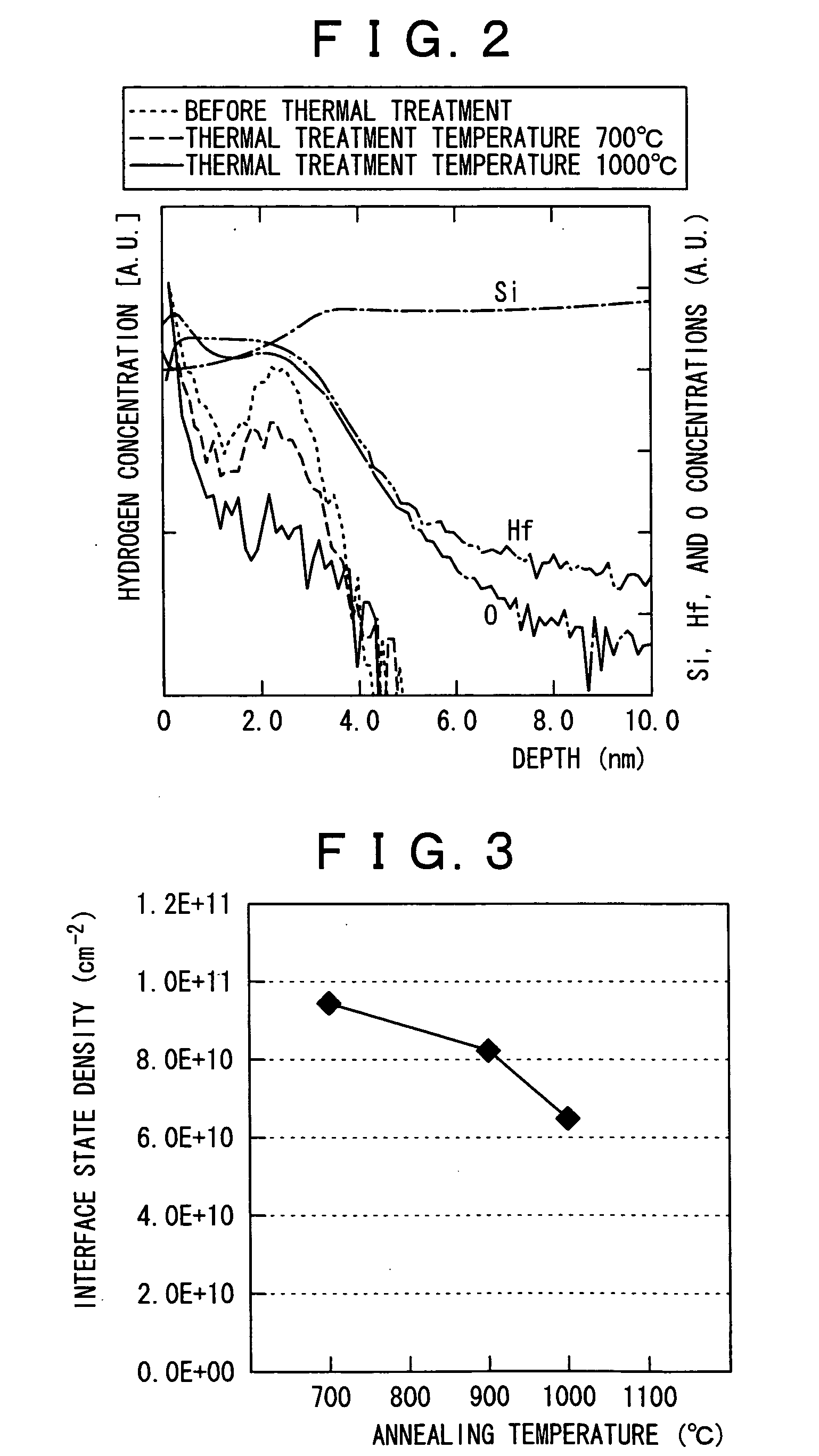Method for forming a thin film and method for fabricating a semiconductor device
a semiconductor and thin film technology, applied in semiconductor devices, chemical vapor deposition coatings, coatings, etc., can solve the problems of degrading mobility, affecting the mobility of semiconductor devices, so as to improve the mobility and reliability of semiconductor devices
- Summary
- Abstract
- Description
- Claims
- Application Information
AI Technical Summary
Benefits of technology
Problems solved by technology
Method used
Image
Examples
example 1
[0023] An embodiment of the method for forming a thin film and the method for fabricating a semiconductor device of the present invention will be described with reference to diagrammatic cross-sectional views of FIG. 1A and FIG. 1B.
[0024] As shown in FIG. 1A and FIG. 1B, a hafnium silicate (HfSiO) film 12 is formed on a substrate 11 by an atomic layer deposition (ALD) method using an organic raw material. In the substrate 11, a silicon substrate is used as a semiconductor substrate. The hafnium silicate film 12 is formed so that the thickness becomes, for example, 0.5 to 2.0 nm in terms of a silicon oxide film. The hafnium silicate film 12 is formed by an ALD method using an organic raw material, and hence hydrogen remains in the film. Generally, when an insulating film in which hydrogen remains is used in a gate dielectric film, a problem of so-called boron penetration occurs in that boron (B) contained in a polysilicon gate electrode penetrates the gate dielectric film and reache...
example 2
[0031] Next, an embodiment of a method for fabricating a semiconductor device of the present invention will be described with reference to diagrammatic cross-sectional views of FIG. 4A to FIG. 4D.
[0032] As shown in FIG. 4A, a hafnium silicate (HfSiO) film 12 is formed on a substrate 11 by an atomic layer deposition (ALD) method using an organic raw material. In the substrate 11, a silicon substrate is used as a semiconductor substrate. Isolation regions 21 are preliminarily formed in the substrate 11 by a local oxidation method (e.g., a LOCOS method) or an STI (shallow trench isolation) method. The hafnium silicate film 12 is formed so that the thickness becomes, for example, 0.5 to 2.0 nm in terms of a silicon oxide film. The hafnium silicate film 12 is formed by an ALD method using an organic raw material, and hence hydrogen remains in the film. Generally, when an insulating film in which hydrogen remains is used in a gate dielectric film, a problem of so-called boron penetration...
PUM
| Property | Measurement | Unit |
|---|---|---|
| gate length | aaaaa | aaaaa |
| thickness | aaaaa | aaaaa |
| thickness | aaaaa | aaaaa |
Abstract
Description
Claims
Application Information
 Login to View More
Login to View More - R&D
- Intellectual Property
- Life Sciences
- Materials
- Tech Scout
- Unparalleled Data Quality
- Higher Quality Content
- 60% Fewer Hallucinations
Browse by: Latest US Patents, China's latest patents, Technical Efficacy Thesaurus, Application Domain, Technology Topic, Popular Technical Reports.
© 2025 PatSnap. All rights reserved.Legal|Privacy policy|Modern Slavery Act Transparency Statement|Sitemap|About US| Contact US: help@patsnap.com



